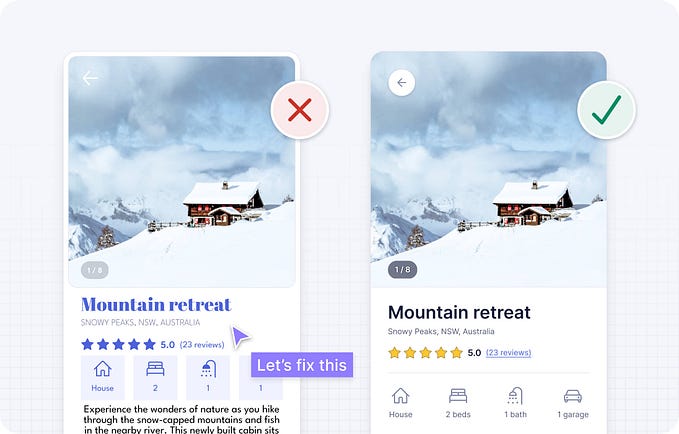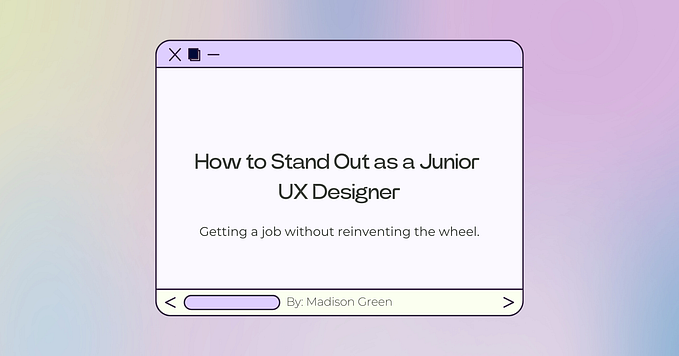
65 Common Mistakes to avoid in your first Design Interview — Checklist
Have you ever found yourself aimlessly wandering into a room only to completely forget your reason for being there? It’s quite a common occurrence, isn’t it? Now picture this — strolling into a design interview room, but clueless as to why you’re there or what you’re expected to do. Sounds like a recipe for disaster, right?
Well, that’s exactly what can happen if you’re not adequately prepared. And trust me, it’s more common than you think. I’ve seen many talented designers stumble in their first interview, not because they lack skills or creativity, but because they fall into common pitfalls they could have easily avoided.
Here’s a Checklist of 65 Common Mistakes to Avoid in Your First Design Interview:

- Not researching the company: Failing to do basic homework about the company’s design ethos, values, target audience, and products.
- Not understanding the role: Lacking clarity about the job description, key responsibilities, and expectations can cause you to answer questions inadequately.
- Neglecting your portfolio: Not updating or tailoring your portfolio to the company or role you’re applying for is a common oversight.
- Failing to articulate design decisions: If you can’t explain the rationale behind your design choices, it can raise red flags.
- Not demonstrating problem-solving skills: Design is about solving problems visually. If you can’t illustrate this skill, you may not make the cut.
- Underestimating the importance of soft skills: Communication, collaboration, and adaptability are all essential in a design role.
- Being defensive about feedback: Instead of accepting constructive criticism gracefully, some candidates might come off as defensive or combative.
- Lack of questions: Not asking questions may signal disinterest or a lack of curiosity about the role or company.
- Being unaware of design trends: Showing that you’re not up to date with current design trends or technologies can leave a bad impression.
- Relying solely on templates: Using templates might imply that you lack originality or the ability to work from scratch.
- Not considering accessibility: Ignoring the needs of users with different abilities can indicate a lack of understanding about inclusive design.
- Not demonstrating business understanding: Design is not just about aesthetics; it’s about meeting business objectives.
- Bad mouthing previous employers or clients: This reflects poorly on your professionalism.
- Failing to demonstrate your process: Interviewers want to understand how you think and work, not just see the end result.
- Lacking attention to detail: Small mistakes in your portfolio or interview responses can suggest a lack of thoroughness.
- Failing to show growth and learning: If your portfolio only shows your successes, it might seem like you’re not learning from your mistakes.
- Not displaying empathy: A lack of understanding or concern for the end-users’ experience can hurt your chances.
- Ignoring data: Making design decisions without considering data can show a lack of comprehensive design strategy.
- Lack of preparation for technical questions: Neglecting to prepare for questions related to design tools and software.
- No clear story for transition: For those transitioning from a different career into design, not clearly articulating your reasons and transferable skills can be a setback.
- Not having a design philosophy: Failing to establish your approach or personal philosophy towards design.
- Not providing context: For each project in your portfolio, make sure you’re providing sufficient context about the project’s objectives, your role, and the challenges faced.
- Ignoring performance considerations: Not factoring in loading times and other performance issues in your designs.
- Bad time management in design challenges: Not appropriately allocating time for ideation, sketching, wireframing, prototyping, and testing during design exercises.
- No evidence of teamwork: Lack of projects that show your ability to work within a team.
- Not showcasing a variety of work: Showing only one type of design project can indicate a lack of versatility.
- Overlooking copywriting (UX Writing): Ignoring the importance of text in your designs.
- Not understanding the company’s users: Not researching or understanding the company’s target audience and user personas.
- Lacking adaptability: Showing an inability to adapt to new design tools, methods, or changes in project requirements.
- Too much focus on aesthetics: Focusing excessively on visuals, while neglecting the functionality and usability of the design.
- Neglecting to follow up after the interview: Not sending a thank you email or message post-interview.
- Not preparing questions for the interviewer: Failing to show genuine interest and curiosity about the role and company.
- Failing to practice presenting: Poor presentation skills can hamper your ability to articulate your thoughts and ideas effectively.
- Not factoring in edge cases in your design: Overlooking the importance of designing for various user scenarios and edge cases.
- Failing to customize the resume and cover letter: Not personalizing your application documents to fit the specific role and company.
- Not being honest about your skills and experiences: Exaggerating or lying about your design skills or past experiences.
- Not being open to new design approaches: Being rigid in your design process and not open to adapting new techniques or styles.
- Failing to show iterative process: Not showing how your designs have evolved based on feedback, testing, or new information.
- Lacking knowledge of color theory: Color plays a vital role in design, and lacking understanding in this area can be a shortcoming.
- Using too many buzzwords: Excessive use of jargon and buzzwords can come off as insincere or pretentious.
- Ignoring the business aspect of design: Not considering how your design contributes to the business goals.
- Failing to show enthusiasm for the role: Not showing excitement and passion for the role and company.
- No clear navigation in your portfolio: Making your portfolio difficult to navigate can be frustrating for hiring managers.
- Lack of alignment between resume and portfolio: Discrepancies between your portfolio and resume can lead to doubts about your credibility.
- Failing to accept responsibility for failed projects: Blaming others for unsuccessful projects instead of showing what you learned from the experience.
- Using inappropriate humor or language: Unprofessional behavior can leave a bad impression.
- Not discussing your learnings from past mistakes: Not showing a learning mindset and how you’ve grown from past errors.
- No evidence of project management skills: As a designer, you’re also often managing projects, timelines, resources, etc.
- Showing too many unfinished projects: While work in progress can be interesting, too many unfinished pieces can raise concerns.
- Not discussing the impact of your work: Not talking about the real-world impact of your designs, such as increased user engagement, higher sales, etc.
- Not backing up your decisions with data: Making design choices based on personal preference instead of user data and research.
- No clear communication of your ideas: Failing to effectively communicate your design concepts and ideas to non-designers.
- Poor body language: Lack of eye contact, slouching, and other non-verbal cues can give a negative impression.
- Not asking for feedback post-interview: Not asking for feedback shows a lack of interest in self-improvement.
- Taking too long to respond to interview invitations: This can make you seem disinterested or unreliable.
- No evidence of self-initiated projects: Side projects can demonstrate initiative, curiosity, and a passion for design.
- Not showing knowledge of usability testing methods: Usability testing is a crucial part of the design process.
- Not handling unexpected questions well: Being thrown off by unexpected interview questions and not showing adaptability.
- Forgetting to double-check your application: Sending your application with typos or incorrect information can show lack of attention to detail.
- Ignoring hierarchy and layout principles: Not adhering to basic design principles can reflect poorly on your design capabilities.
- Inadequate preparation for behavioral questions: Failing to prepare for questions about handling conflict, teamwork, challenges, etc.
- Ignoring the development aspect of design: Failing to consider how your designs would be implemented by developers.
- Poor online presence: Not having a professional online presence on platforms like LinkedIn, Dribbble, or Behance.
- No clear career goals or vision: Failing to articulate your career aspirations and how this role fits into that.
- Not showing a willingness to learn: The field of design is always evolving, and showing an unwillingness to learn new things can be a major drawback.
A Perfect Resume template for your Design Interview:
Alongside highlighting these pitfalls, I’ve devised an effective resume template designed to give you a competitive edge. This template is crafted to help your skills and experiences shine, standing you out amongst other candidates. Don’t just take my word for it — my friend used this very template to excel in screening rounds with eminent companies like Cult.fit and NoBroker, ultimately landing a full-time job at Unacademy.
🎉 In fact, she finally landed a full-time job at Unacademy using this template. Now, you can access it too by clicking on the link below 👇🏼
You can use this coupon to get 50% off: LETSGETSOMEOFF
Summing up
So there you have it, 65 common mistakes that can turn your first design interview into a forgettable experience, or worse, a disaster. But remember, knowing these mistakes is only half the battle. The real challenge is to avoid them. And that requires practice, preparation, and a whole lot of self-awareness.
Next time you find yourself in a design interview, ensure you’re equipped with purpose and understanding. Remember, it’s perfectly fine to make mistakes, provided we learn from them. After all, isn’t design fundamentally about continual iteration and improvement?
Cheers! You’re Breathtaking!










